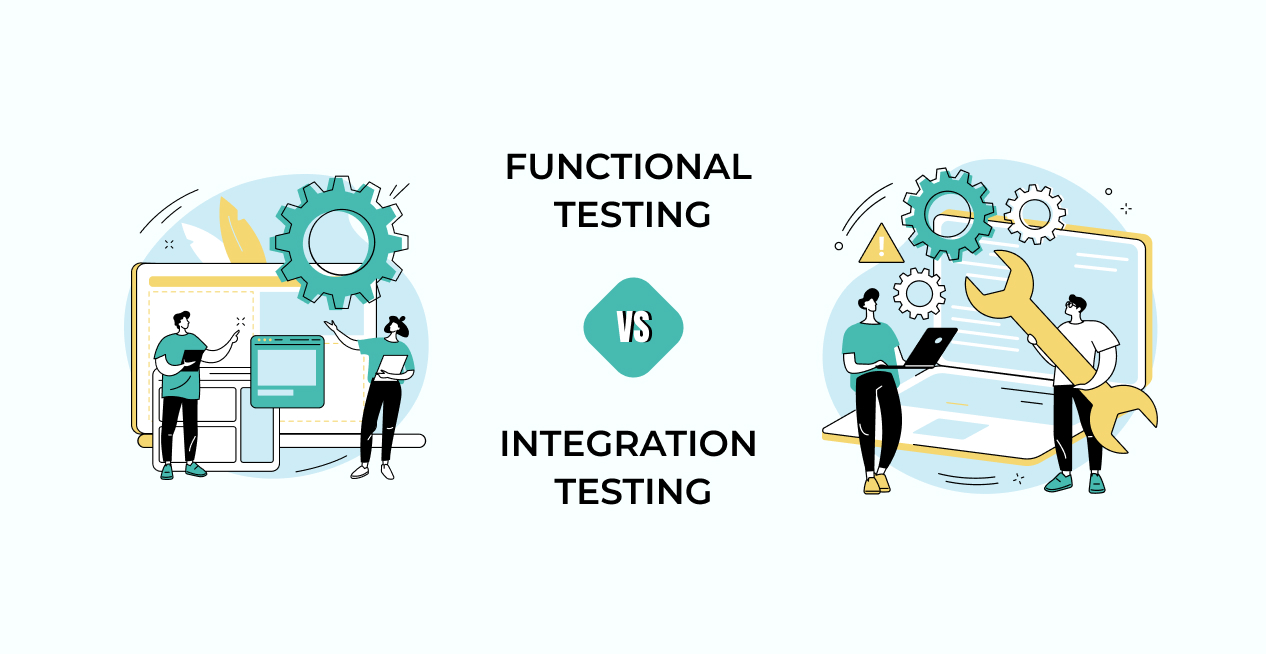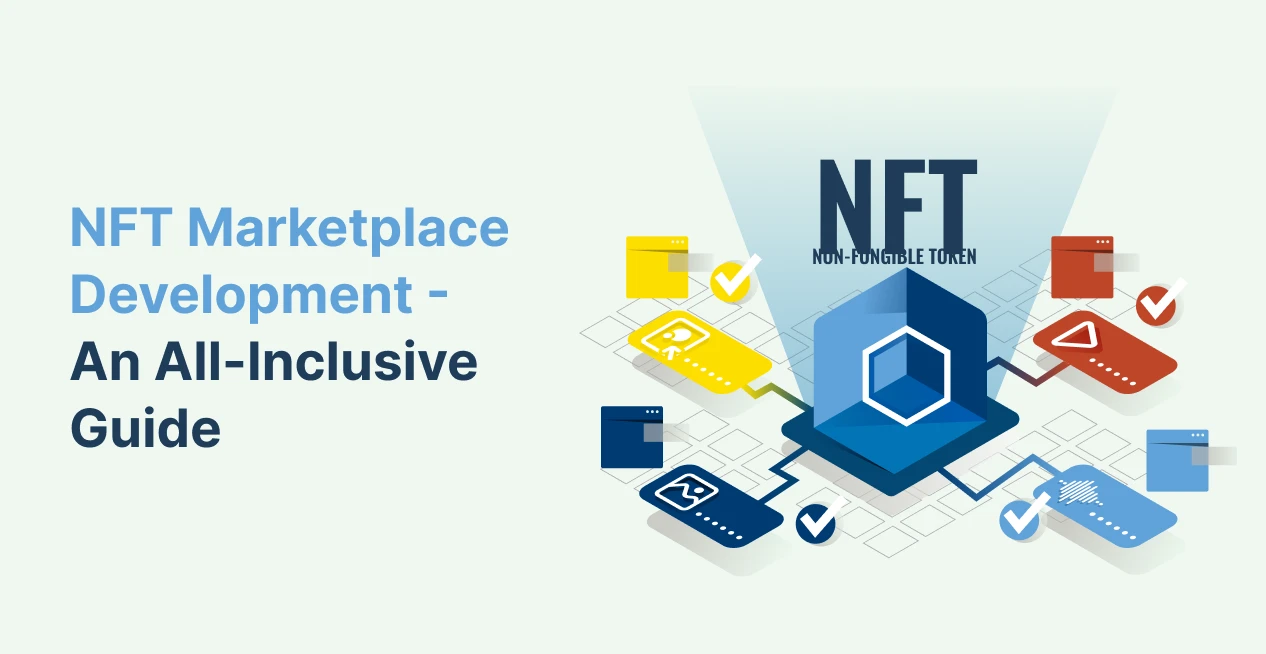-
Functional Testing vs Integration Testing: Overview
- What is Functional Testing?
- What is Integration Testing?
- Functional Testing vs Integration Testing: Pros and Cons
- Functional Testing vs Integration Testing: Challenges
- Integration Testing vs Functional Testing: Techniques and Approaches
-
Functional Testing vs Integration Testing: Comparison
-
When to perform Functional Testing?
-
When to perform Integration Testing?
-
Functional Testing vs Integration Testing: Final Words
Functional Testing vs Integration Testing: Overview
Functional testing vs Integration testing: Which one is superior? They are two crucial elements of software testing that guarantee a product’s dependability and quality.
Although they have different goals and scopes, they both aim to verify a software system’s functionality. This blog will examine the differences between functional vs integration testing, their pros and cons, the challenges associated with their use, and when to use each. Understanding the distinctions between these two testing techniques can help you produce high-quality software that satisfies the needs of your clients or business, whether you are a software developer, tester, or a business owner.
What is Functional Testing?
It is a kind of software testing that is used to determine whether a software application’s functioning complies with the requirements. The functional test compares the actual result to the expected result for each function by providing a value, calculating the output, and comparing it to the expected one. Functional testing is carried out as “black-box” testing, which is presented to ensure that an application’s or system’s functionality acts as we anticipate. It is carried out to ensure that the application is functional.
Because it focuses more on the requirements of the application than the actual code, functional testing is often known as “black-box testing.” The tester must only test the programme and not the system.
What is the process of Functional Testing?
Testers perform functional testing following these steps:
- The tester verifies the software application’s requirements.
- The requirement specification tester will develop a plan based on the analysis.
- The tester will design the test case after planning the tests.
- The tester executes the test case design.
- Analyzing the coverage to determine the application’s covered testing areas.
- As a final point, defect management resolves defects.
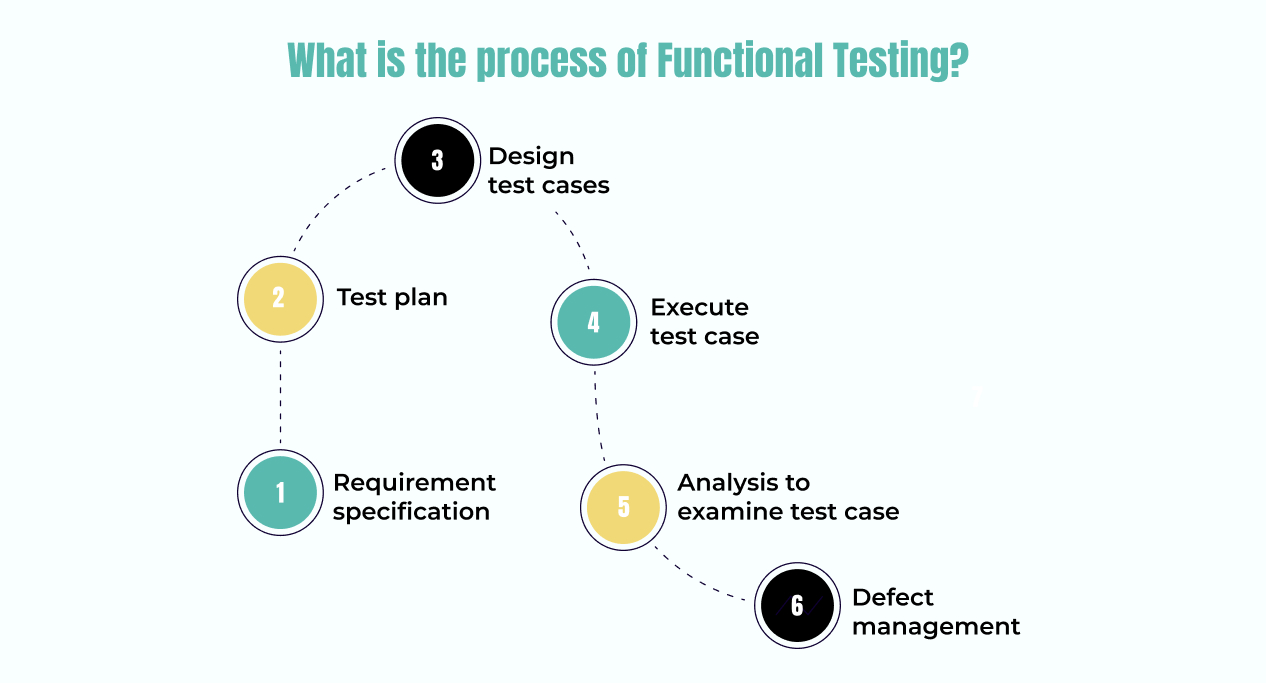
Examples of Functional Testing
- Verifying that all web application features, including the search function and inbound link pathway, are working properly.
- When a user enters the correct account login credentials, ensuring they are directed to the relevant account page, or they receive the appropriate error message if the credentials are incorrect.
Functional Testing Tools
- Watir – Watir is an open-source, cross-platform tool for testing web performance, which interacts with the browser like a human, clicking links, filling out forms, and validating text. It uses a Ruby scripting language.
- SoapUI – An open-source functional testing tool, mainly used for testing Web services. several protocols, including HTTP and SOAP, are supported.
- QTP – It is based on the VB scripting language and allows you to test both web and desktop applications using automated functional testing.
- JUnit – Java unit testing framework JUnit allows you to test small units of code repeatedly.
- Selenium – This open-source tool automates web browsers. It offers a single interface from which you can write test scripts in languages such as PHP, Ruby, C#, NodeJS, Python, Perl, and Ruby.
What is Integration Testing?
Integration testing involves testing multiple modules to verify whether they work together as expected. In integration testing, the product’s interfaces and collection modules are validated.
It is generally recommended that integration testing be performed after unit testing since this testing involves knowledge of interconnected modules and their interactions. Among the several modules, the system interface’s features are given priority. The product’s functional testing is the sole testing covered by integration testing. Test engineers and developers are frequently the ones who carry it out.
What is the process of Integration Testing?
Here is the step-by-step process to follow in integration testing.
- Prepare a test plan to determine which resources to allocate in integration testing.
- To ensure the testing is effective, consider which integration method will work best according to the parameters of the modules.
- Once a testing approach has been chosen, it is important to create a number of test scenarios and scripts that the team of developers or engineers can utilize for integration testing.
- After planning and designing, the team can integrate the various modules. In this stage, teams can carry out test scenarios to look for any errors within the integrated units.
- In this stage, the tester has to prepare a document mentioning any errors or defects that occur within the integrated modules, noting the exact nature of the problem and when it occurred. After addressing the defect, run the test again to see if the changes solved the problem. The process must be repeated until all defects identified in the integration test have been resolved.
Examples of Integration Testing
- Confirming that a welcome message is sent to the user after they log into an online application.
- Ensuring that a user can move easily from the billing and payment gateway pages to their online shopping cart.
Integration Testing Tools
- Rational Integration Tester – An integration testing tool by IBM, the Rational Integration Tester allows you to create integration tests without writing any code.
- LDRA – With the LDRA tool suite, you can test your units, integrations, and systems. Most commonly, it is used for critical software applications such as aerospace, medical devices, automotive, and more.
- Protractor – It supports scripting in Javascript to test Angular and AngularJS applications.
- Citrus Integration Testing – The Citrus open-source testing framework supports HTTP REST, FTP, XML, JSON, TCP/IP, SOAP, etc message protocols and data formats.
- Steam – The Steam test automation framework is capable of performing headless integration tests.
If you are having trouble using these tools, hire the QA Testers at OpenXcell to assure the quality of your project with the right blend of skill sets and out-of-the-box thinking.
Functional Testing vs Integration Testing: Pros and Cons
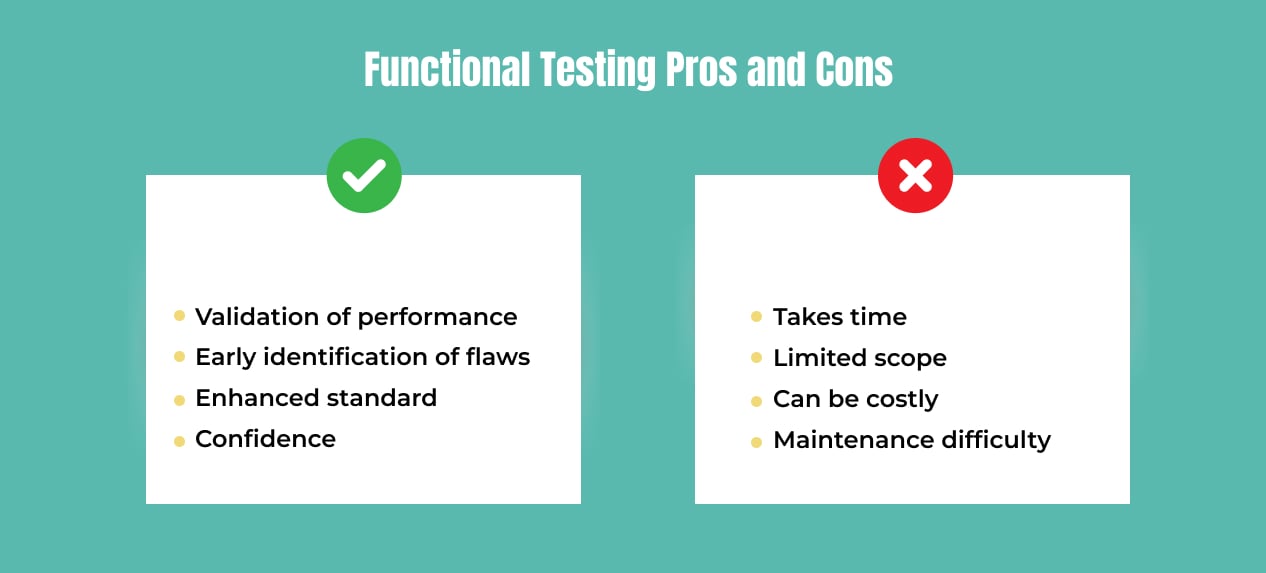
Advantages of Functional Testing
- Validation of performance – Functional testing validates that the software performs as intended and complies with the functional requirements stated during the design process. This helps to guarantee that the software is appropriate for its intended usage and fits the needs of the end users.
- Early identification of flaws – Potential flaws can be found and fixed early on by undertaking functional testing early in the development cycle, which cuts down on the time and expense needed to fix them later.
- Enhanced standard – Functional testing lowers the possibility of errors and helps to increase the overall quality of the product by confirming that it works as intended.
- Confidence – The software is validated through functional testing, giving the development team more assurance about the software’s functionality.
Disadvantages of Functional Testing
- Takes time – Functional testing can take a long time, especially for big and complex applications.
- Limited scope – Functional testing does not test the underlying code; it just validates the functional requirements. This means that in addition to functional testing, the programme also needs to undergo unit testing, integration testing, and performance testing.
- Can be costly – Conducting functional testing can be costly, especially for complicated systems that demand intensive testing work.
- Maintenance difficulty – Maintaining functional tests can be time-consuming, especially if the functional requirements change as the project is being developed.
Advantages of Integration Testing
- Assists in the detection and identification of any problems or faults that might develop as a result of interactions between various system components.
- Helps to make sure that all of the parts function properly and according to the plan.
- Reduces the time and costs associated with resolving issues later in the development cycle by making it easier to identify and fix problems early on.
- When the software system is tested in a more accurate and representative setting, it boosts confidence in the system as a whole.
- Enables a better knowledge of the system’s overall functionality and performance by giving a more thorough picture of the system.
Disadvantages of Integration Testing
- As it includes setting up, configuring, and testing all the many components together, it could be time-consuming and resource-intensive.
- Integration testing could need specialized tools, as well as specific knowledge and abilities.
- It requires coordinating the actions of numerous teams and components, which can be challenging and complicated.
- It can be error-prone due to the numerous factors and interactions between components, which make it challenging to forecast the outcome with accuracy.
Functional Testing vs Integration Testing: Challenges
Although these two testing techniques are beneficial, there are some challenges to overcome as well. Here are some of the limitations mentioned below for integration testing vs functional testing.
Challenges of Functional Testing
- Incomplete requirements – Dealing with insufficient or confusing requirements that may cause disagreements, misunderstandings, or inconsistencies among stakeholders, developers, and testers is one of the biggest issues in functional testing.
- Inadequate test data – Finding or producing enough realistic test data that can cover all potential scenarios and inputs is another major difficulty for functional testing.
- A complicated test environment – Setting up and maintaining a sophisticated or dynamic test environment that can replicate the conditions and interactions of the system in real-world settings is a third common challenge associated with functional testing.
- Reporting test results and measuring – The fourth major challenge in functional testing is measuring and reporting test results in a meaningful and useful way that can assist in decision-making and improvement.
Functional testing can pose challenges, but you can opt for Functional Testing Services from experts who follow a robust approach and develop personalized plans to ensure that all requirements of the application are met.
Challenges of Integration Testing
- Difficult to perform – It is far more challenging to carry out than system testing, where the application can be viewed as a “black box.”
- Time-consuming – Testing every interface between the various connected components takes a lot of time and resources.
- Additional work – The development of stubs and drivers is necessary, but if done incorrectly, there will be insufficient testing.
With the help of a trustworthy software testing company, you can automate your system testing process to reduce uncertainty and give you confidence that your application is in competent hands.
Integration Testing vs Functional Testing: Techniques and Approaches
Understanding the distinct techniques and approaches used in functional test vs integration test scenarios is crucial for effectively ensuring the quality and reliability of software products.
Functional Testing Techniques
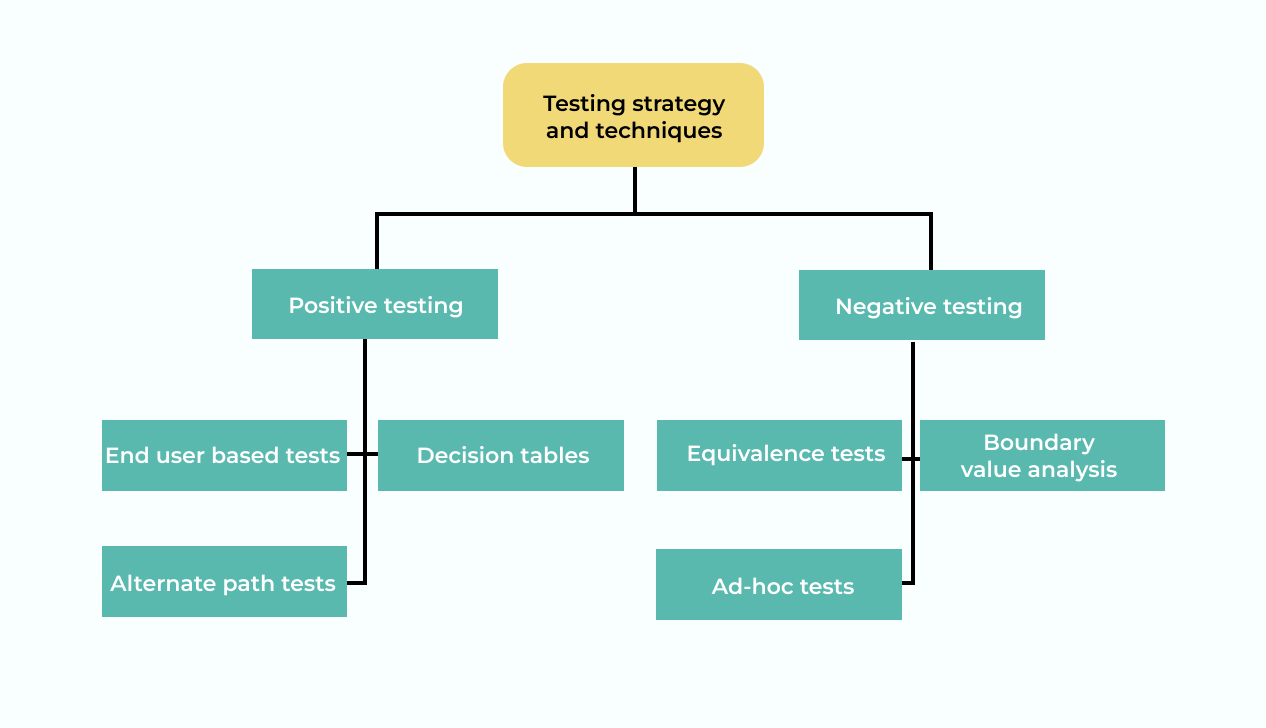
Functional Testing Approaches
The basic approach for testing this scenario can be divided into two categories:
- Positive testing – Positive tests, also known as happy path tests, are carried out to make sure that the product satisfies at least the most important requirements for consumer use.
- Negative testing – Negative situations make sure that even when the product is exposed to unexpected data, it behaves correctly.
Integration Testing Techniques and Approaches
In integration testing, developers can use a variety of accepted software testing techniques and approaches. Here are some of the most common approaches available in the scenario of integration testing.
- Top-down Approach
To minimize the need for drivers, you can test high-level logic and data flow first. - Bottom-up Approach
A low-level utility module is tested and integrated first in this approach so that stubs are not required. - Sandwich Testing Approach
Also known as hybrid integration testing, which combines bottom-up and top-down approaches. The method is primarily used for large projects that have several sub-projects. - Big Band Approach
Small applications are best tested in this way, as all modules can be tested at once.
Functional Testing vs Integration Testing: Comparison
Let’s explore the key distinctions between integration testing vs functional testing.
| Functional Testing | Integration Testing |
| Ensures that the software is working properly and meets the user’s expectations | Tests how different modules interact with each other |
| It is executed by testers only. | It is executed by testers and developers. |
| Functional testing techniques include Black-box testing. | Integration testing techniques include Black-box, White-box, and Grey-box testing. |
| Functional testing is more complex to perform. | Integration testing is comparatively less complex to perform. |
| Maintenance cost is highly expensive. | It requires high maintenance and is expensive as well. |
| In functional testing, not all issues are identified or fixed. | In integration testing, the chances of fixing issues are higher than the functional testing. |
| This test is performed before non-functional testing. | This test is performed after unit testing and before system testing |
| Watir, SoapUI, QTP, JUnit, and Selenium are some of the tools used in functional testing. | Rational Integration Tester, LDRA, Protractor, Citrus Integration Testing, and Steam are some of the tools used in integration testing. |
When to perform Functional Testing?
A functional test can be performed after all software functionalities related to a feature have been developed. Before releasing software to the market, functional testing is typically conducted before integration testing.
When to perform Integration Testing?
As part of the software development process, integration testing comes after unit testing and functional testing. An integration test is performed after each component or module of a software application has been unit tested, and is ready for integration. In this type of testing, a software application’s interaction and communication between different modules are tested.
Functional Testing vs Integration Testing: Final Words
There isn’t a one-size-fits-all answer when it comes to software testing. In Functional testing vs integration testing, each has a specific function and offers important information about the overall quality of the software. Consider it as a puzzle. Each piece is essential to solving the puzzle and represents a distinct kind of testing. For instance, functional testing assures that the software satisfies the specified functional requirements, while integration testing assembles the elements to guarantee they function flawlessly.
To create a high-quality software product that satisfies end-user expectations, a thorough testing approach that incorporates a variety of testing types is essential. Instead of choosing one sort of testing over another, employ each type of testing to create a thorough and certain picture of the software’s quality by embracing the puzzle.


